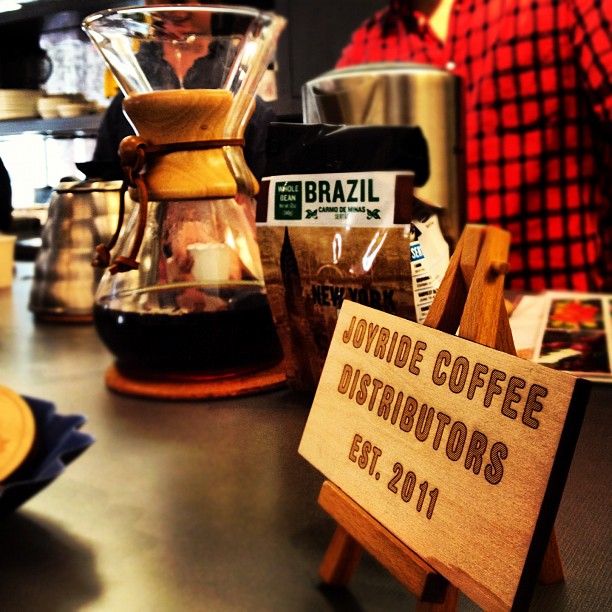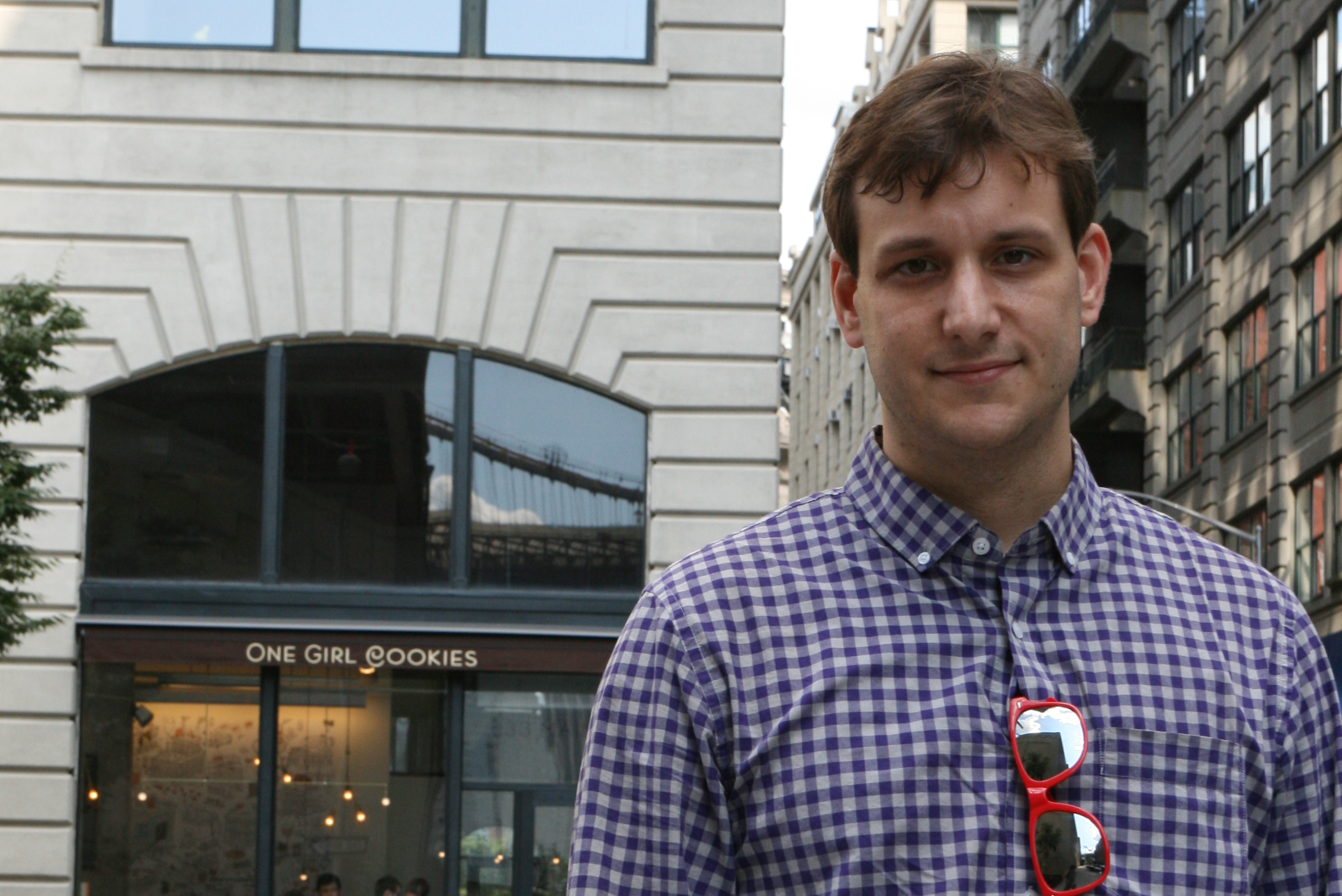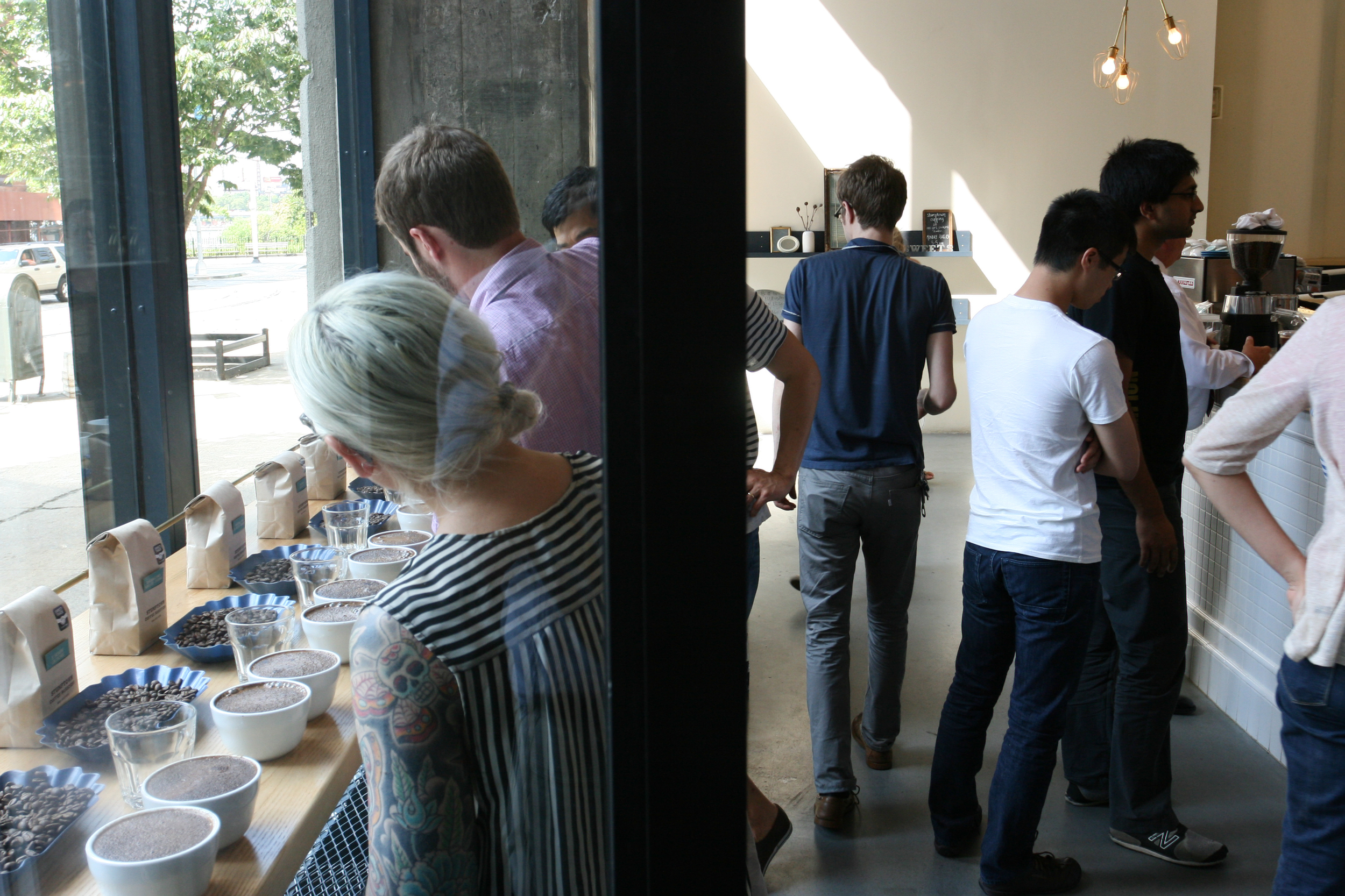As a coffee connoisseur, people always ask me about good first steps toward improving the quality of coffee they brew at home and at the office. Rather than pitching Joyride or freshly roasted beans (which are both terrific by the way), I usually recommend that they try cleaning their brewing equipment. It is by far the easiest, cheapest and most important way to get better coffee immediately.
Joyride Introduces Three New Roasters to its Menus
Joyride Coffee is happy to announce that we are adding two roasters to our San Francisco menu and one additional roasting partner to our New York menu for a total of 7 new coffees.
A Joyride Coffee Tasting FAQ
The way we like to introduce potential customers to our products is through a free in-office tasting.
But what exactly a tasting is, is a bit of a mystery to most people. The norm in the coffee industry is a cupping, but to be honest, while these give the clearest understanding of a coffee, they don't really give people a taste of how their coffee will go down on a day-to-day basis. So then what is a tasting? For this, I think an FAQ format is best.
What Coffee will we try at a tasting? How will it be prepared?
In terms of the coffee, a tasting will consist of three different roasts; one from each of our roasters. We will usually have a Latin, an African and a blend. For example, recently we have been doing a Dallis Brothers Sertao Yellow Bourbon from Brazil, a Stumptown Ethiopian Mordecofe and a Blue Bottle Bella Donovan blend. These coffees are prepared on a Chemex pour-over. We use Chemexes because they allow us to get a very clean cup, and they mimic the way that coffee is brewed when prepared with our office equipment. In the summer months, we also bring a sample of our in-house cold brew. Cold-brew carries all the potency of coffee, with a fraction of the acidity. We'll give tasting notes on the coffees, and describe what traits makes them special, such as different single-origin coffees, single-varietal coffees and Direct trade coffee sourcing. We'll also go into the process of how coffee goes from being a little red cherry on a plant in Latin America, to a delicious brown liquid in an office in New York.
What Equipment options do you offer?
We offer coffee equipment for offices from ten to a thousand employees. We have options that are direct plumbed, and ones that are filled by carafe. You can look at our coffee equipment options here. We also offer water cooler solutions for offices of all sizes.
What do we need on our End?
Our baristas will come fully prepared. All we need is a water source, a table and two outlets.
How long is a tasting?
A tasting takes about half an hour sandwiched between a 15 minutes setup and a 15 minutes break-down.
How many people can come to a tasting?
We have done tastings for 3 people and 300 people. These events can be as big or small, formal or informal as you like.
Is there any cost or commitment?
Nope! The tasting is totally free and there is no commitment. Even if you go with us, we don't have a contract. We don't believe in them! We think that our beans should speak for themselves and if you aren't happy, you should be able to walk away.
Stumptown Office Coffee: August 2012 Tasting
August has Stumptown releasing it's newest crop of Direct Trade Coffee. Needless to say, we were excited to try and find a new Stumptown Office Coffee.
This particular role out leans heavily toward the Latins with Three Guatemalans, two Hondurans an an El Salvadorian offering. Particularly noticeable was that all three Guatemalan offerings were single varietal. It seems like the move toward single-varietal coffees among the highest quality beans is inexorable. As beans are increasingly divided into smaller and smaller lots, all this level of differentiation has becoming increasingly prominent. Even our most affordable offering, the Dallis Bros. Fazenda Sertao, is composed exclusively of Yellow Bourbon. While certain varietals have established themselves, namely the Geisha so famous for the outrageous prices it can pull in, it seems like many of these varietals are still looking for their own voices, and point of view. I'm sure that as coffee becomes ever more stratified, we'll find plenty of distinction between them, and find that certain varietals work better with certain teroir.
But enough of my musings about varietals. Lets talk about the coffees.
In Office Tasting
We conducted our tastings in two steps. Two Fridays ago, my brother and I sat down and made a Chemex of each (look here for a brew guide). 43g Coffee, 700g water. We took tasting notes and tried the coffee first hot, and then again about an hour later, at room temperature. The Kenyan Peaberry didn't make it to this stage. We had already brewed an airpot of it on our fetco and drank it while making deliveries the day before. While it is the most expensive offering from the new role out, for the quality of coffee it is, we found it a bargin. It has a huge flavor and I think is best enjoyed in small quantities, at 90-100 farenheit.
Stumptown Cupping at One Girl Cookies, Dumbo
The other part of our sampling was a proper cupping at One Girl Cookies, in Dumbo. It was organized by Jamie and Jules of Stumptown. Jules was actually the lady who trained me to make espresso about three years back, when we were starting up the mobile cafe that turned into Joyride Coffee. What stood out in our minds was the breadth of the Latins. Of course, the Nano Challa (a returning favorite, for all of you Ethiopian lovers) was great, but the Latins portrayed a wildly varied cup, from the timid and fragile tea like El Salvadorian Los Caleros, to the syrupy and almost Indonesian Guatemala Finca Semillero - Caturra. I guess I sort of associated Latins with lighter body, chocolatey notes and some spices.
And the Coffees:
We will be trying out the Latins as Stumptown Office coffee, and as our Office Coffee Cold-brew. We'll let you know when we find out what we think works best.


























